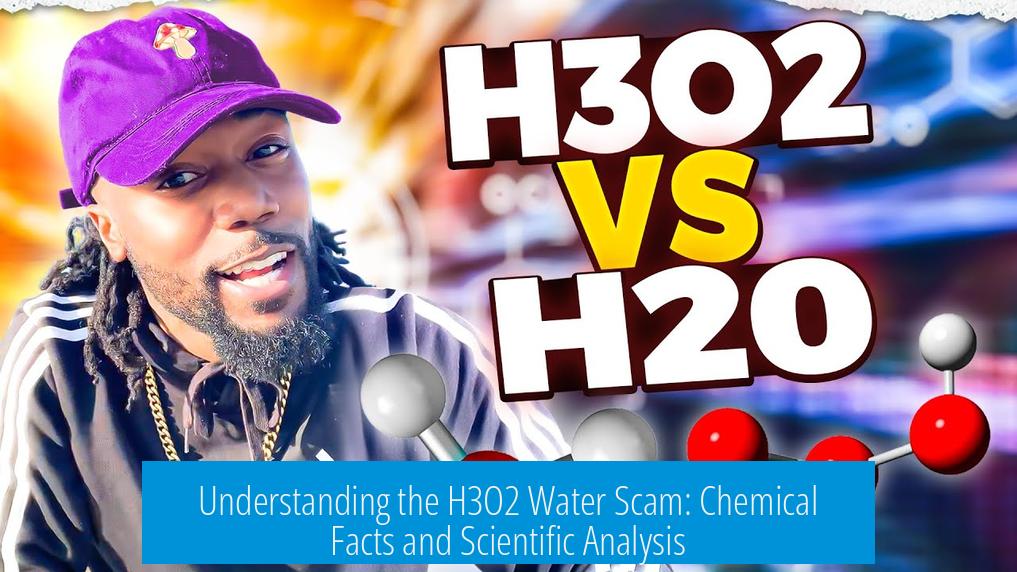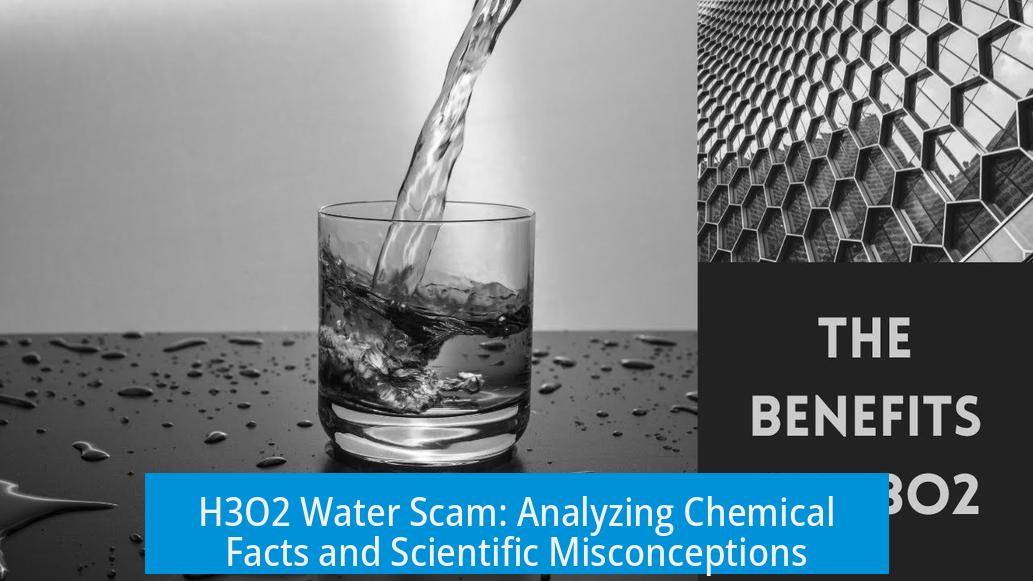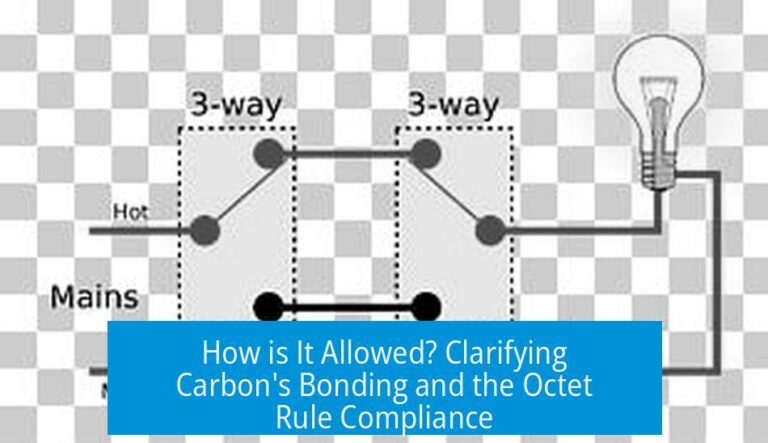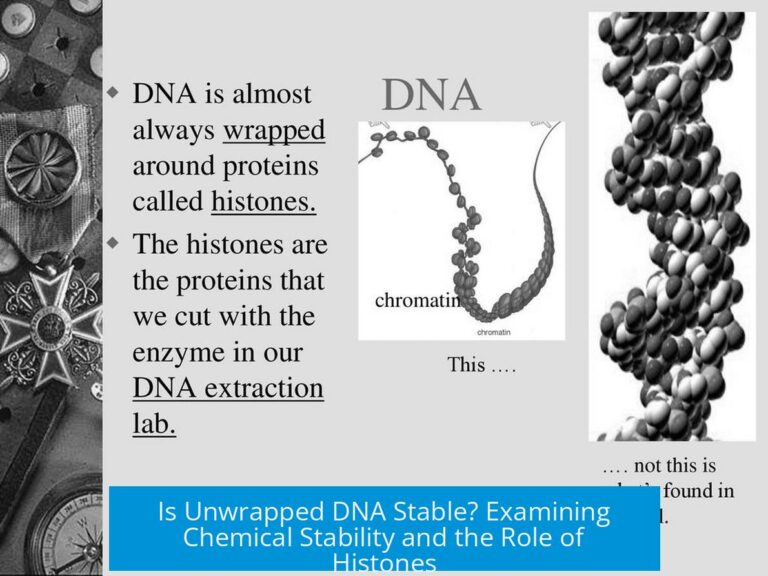Understanding the H3O2 Water Scam: Chemical Facts and Scientific Analysis

The H3O2 water scam promotes a supposed “fourth phase” of water with the chemical formula H3O2, claiming unique structural and health benefits. Chemically and scientifically, H3O2 as a distinct, stable water molecule does not exist. Its claims stem from misinterpretations of water chemistry, radical species, and pseudoscientific marketing. The concept of “structured” or “hexagonal” water is based on natural properties of hydrogen bonding but is distorted to sell false health products.
1. Chemical Validity of H3O2
From a chemical standpoint, the formula H3O2 is not plausible as a stable compound of water. Water molecules (H2O) consist of two hydrogen atoms bonded to one oxygen atom. The idea of H3O2 suggests an extra hydrogen and oxygen combined in an unusual way that contradicts fundamental chemistry.
- H3O2 misses a hydrogen atom for traditional bonding and is not recognized as a stable molecule.
- Hydrogen bonding between water molecules forms transient clusters but does not form a discrete H3O2 ion or molecule.
- Electrostatic or photonic disturbances can create transient species like hydroxyl radicals (·OH), hydronium (H3O+), or possibly short-lived complexes sometimes described as H3O2 radicals, but these are unstable and reactive.
- These radicals rapidly transform into common compounds like hydrogen peroxide (H2O2) or revert back to water and other ions.
These facts reveal the core of the scam: using an invalid chemical structure to market products with no real molecular basis.
2. The “Fourth Phase” and Exclusion Zone (EZ) Water
The major scientific figure cited in support of “structured” water is Dr. Gerald Pollack, who proposed the “exclusion zone” (EZ) or “fourth phase” of water. EZ water is described as forming near hydrophilic surfaces, with properties distinct from liquid water. It is said to be negatively charged, more ordered, and capable of storing energy.
Key points about Pollack’s theory:
- EZ water involves layers of ordered water molecules, not a new molecule like H3O2.
- Pollack’s research is experimental and theoretical, focusing on physical chemistry and biology rather than commercial products.
- No validated health claims exist or are supported by Pollack’s work; it remains a scientific hypothesis, not proven medicine.
- Funding from major institutes like NIH supports basic research, but it does not endorse products marketed as “living water.”
Pollack himself does not claim that bottled or treated waters sold commercially reflect his findings.
3. Water Structure and “Hexagonal Water”
Water naturally forms transient hydrogen-bonded networks that can assume various shapes depending on temperature and pressure. Among these forms, ice crystallizes most stably into a hexagonal lattice. “Hexagonal water” marketing claims misuse this fact to imply enhanced hydration and health benefits.
- Hexagonal ice is one of many crystalline ice structures, naturally occurring without any special processing.
- “Structured water” can refer broadly to clusters of water molecules connected by hydrogen bonds, typically ranging from dimers to hexamers.
- No commercial method creates stable, enhanced hexagonal water beyond naturally occurring ice.
- Claims stating you can create hexagonal or structured water via vortex stirring, magnetic fields, or exotic treatments are unproven and lack scientific basis.
Scientific consensus sees water’s microscopic structure as dynamic, fleeting, and influenced by temperature, but not modifiable into stable new forms that deliver health effects.
4. Scientific Consensus and Criticism
The wider scientific community dismisses the H3O2 molecule and associated health claims as pseudoscience. Chemical principles and experimental data do not support the existence of stable H3O2 or special “living water” forms with therapeutic powers.
- Claims resemble past pseudoscientific phenomena like “polywater,” debunked decades ago.
- Peer-reviewed literature shows no medicinal or metabolic benefit from drinking water structured as H3O2 or otherwise.
- Popular science and Wikipedia articles label these claims as nonsense or marketing hype.
- Scientists stress that water’s hydrogen-bond networks form and break constantly—there is no stable, alternate phase readily produced in bottled water.
Some open-minded researchers acknowledge that water near biological interfaces may behave differently, hinting at a degree of structure, but this is far from the claims made by marketers.
5. Marketing and Commercial Misuse
The H3O2 scam leverages scientific-sounding jargon to sell bottled water and related products. Phrases like “electrolytically enhanced,” “hexagonal water,” “alkaline water,” and “electrostatic charge” populate marketing without credible evidence.
| Marketing Claim | Scientific Reality |
|---|---|
| H3O2 is a real, stable molecule with special energy | No such molecule exists; water remains H2O and transient ions. |
| Structured water improves hydration and health | Water’s transient clusters do not impact health measurably. |
| Magnetic or vortex treatments create active water | Magnetic fields do not permanently alter water structure at health-relevant levels. |
| Water with exclusion zone properties can be bottled and sold | EZ water forms near surfaces; not replicable or stable in bottles. |
| Marketing cites prestigious universities without citations | No peer-reviewed evidence supports these product claims. |
Consumers buying such products often also invest in unrelated pseudosciences, highlighting vulnerability to marketing rather than scientific literacy.
6. Social and Psychological Aspects
Belief in the H3O2 scam frequently involves rejection of scientific skepticism and adherence to conspiracy theories about suppression of natural cures. Social dynamics reinforce this:
- Critics encounter resistance even when presenting scientific evidence.
- Believers may use anecdotal validation and distrust mainstream science.
- Marketing benefits from this pack mentality to gain sales despite lack of proof.
- Scientific communication struggles to overcome emotional and social biases involved.
It is often impossible to reason skeptics out of beliefs that formed without rational evidence.
7. Summary Table of Key Chemical and Scientific Points
| Claim / Concept | Scientific Assessment / Reality |
|---|---|
| H3O2 formula | Chemically invalid or extremely unstable; no stable H3O2 molecule exists in water chemistry. |
| Exclusion Zone (EZ) Water | Concept from Pollack’s research; existence debated; no proven health benefits or stable commercial form. |
| Hexagonal Water | Ice’s hexagonal structure is natural; no special hexagonal water created by treatments or products. |
| Electrostatically Charged Water | Static charges dissipate rapidly; no health benefit from charged water. |
| Structured Water Theory | Water’s hydrogen bonds form transient clusters; scientific debate exists but no proven health impact. |
| Magnetic/Vortex Water Treatments | Claims lack evidence; magnetic fields affect water at theoretical levels but not proven for health purposes. |
| Marketing Claims | Largely unproven, vague, and misleading; no credible scientific backing. |
Key Takeaways
- H3O2 does not exist as a stable water molecule; scientific claims for it are false.
- Structured or hexagonal water describes natural hydrogen bonding patterns, not new molecules or enhanced health forms.
- Dr. Pollack’s “fourth phase” or exclusion zone water is a legitimate research subject but lacks commercial or health relevance as marketed.
- Claims around magnetic, vortex, and electrostatic water modifications lack scientific validity and are typical of pseudoscience scams.
- Marketing exploits scientific jargon to mislead consumers and sell ineffective products.
- Scientific skepticism dismisses these claims based on chemistry, physics, and tested experimental evidence.
- Belief in the scam often involves social and psychological dynamics resistant to rational arguments.
What is the main scientific criticism of H3O2 water claims?
H3O2 is chemically incorrect as it lacks a hydrogen atom. Water molecules don’t form stable H3O2 structures. Any supposed H3O2 radicals quickly convert to common species like hydrogen peroxide. Claims lack chemical evidence.
How does “structured” or “hexagonal” water relate to H3O2 claims?
Hexagonal water is a natural form of ice crystal. The idea of enhanced or perfect hexagonal water is misleading. Water structures exist but they don’t create special health effects. Marketing often twists these facts.
What does Dr. Gerald Pollack’s “fourth phase” water theory state?
Pollack describes a phase called exclusion zone (EZ) water, sometimes labeled H3O2, that stores energy and is negatively charged. This remains a theory, not proven as a health product. It’s about water in cells, not bottled water.
Why is H3O2 water considered a marketing scam?
Companies misuse complex science terms to promote bottled water with no proven benefits. The products exploit vague ideas about water structure and misinterpret Pollack’s research. No scientific or medical proof backs health claims.
Are there any valid scientific studies supporting beneficial effects of structured water?
Some research shows water can have varied structures, influencing biology at a molecular level. But there’s no solid evidence that drinking marketed “structured water” improves health. Most claims remain unverified and speculative.





Leave a Comment